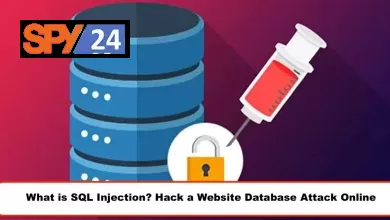Can We Hack Websites?

This guide will share the foremost common hack websites methods to assist you to get ready for malicious attacks. The profitable nature of the Internet has driven a critical increase in the number of site hacking methods. Cybercriminals utilize many different devices and methods to gain access to the sensitive data that is found online. They frequently attack websites and network resources to blackmail cash or take resources from organizations.
To secure yourself and your commerce against cyber criminals, it is critical to be mindful of how site hacking methods work.
How to Hack Websites – A Step-by-Step Guide
There are several ways for a hacker to perform site hacking. All he needs is to discover the defenseless point inside the site to enter and gain access to the critical data. In this article, we have specified a few of the amazing tricks that you can perform to hack websites.

1. Downloading Necessary Tools
Before you’ll be able to start hacking a website, you’ll require to download the necessary tools and software. This incorporates a web application security scanner that will identify any potential vulnerabilities within the target site. You’ll moreover require a penetration testing tool like Metasploit, which permits you to exploit any identified vulnerabilities. Also, you ought to have a great understanding of scripting languages such as HTML and JavaScript so that you can customize your attacks accordingly.
2. Analyzing Target Website
Once your devices are downloaded and arranged, it’s time to analyze the target site. Begin by checking out the source code for any potential security imperfections or weak points within the system. As you are doing this, keep an eye out for any outdated computer program versions that may be effortlessly exploited. At that point move on to analyzing web applications such as databases, content management systems (CMS), forms, and login pages that might be defenseless to attack.
3. Exploiting Vulnerabilities
Once you’ve recognized any potential weak points within the target site, it’s time to start exploiting them using your penetrating testing tool or other methods like SQL injection or Cross Site Scripting (XSS). When exploiting vulnerabilities, be sure not to cause any permanent harm as this may lead to legitimate trouble in the case caught by authorities!
Web application threats

Common threats to web applications include the following:
1. SQL injection
An SQL injection attack involves a hacker giving a malevolent SQL inquiry to an application. The inquiry gives the hacker access to read significant data from the database and even run unauthorized commands, resulting in basic information loss and compromise.
Go to Havij Pro Software Cracked Free Download Tools SQL Injection to get the most recent tool.
2. Denial of Service
A distributed denial-of-service (DDoS) attack impacts the normal activity of a targeted server by overflowing the target with various demands. They’re ordinarily carried out inside systems of connected devices that are infected with malware and are controlled remotely by an attacker. These individual devices are called bots to which an attacker will send inaccessible instructions to perform. When a bot targets the server, it’ll send a request to the target’s IP address and result in server damage.
3. DNS Spoofing Attack
Domain Name System (DNS) harming and spoofing exploits the vulnerabilities of the DNS server and diverts activity away from substantial servers to fake ones. In case the victim has gotten to a false page, he will be transferred to another site that causes hurt to his system. The most impact of this attack is information theft.
4. Cross-Site Request Forgery Attack
Cross-Site Request Forgery (CSRF) attacks the victim and performs a few undesirable activities as anticipated by the attacker on a web application without authorized access. The attacker traps the victim into executing a few unlawful activities chosen by the attacker.
5. Cookie / Session poisoning
The reason for this danger is unauthorized access to data.
6. Form Tampering
The reason for this threat is to alter form information, such as costs in e-commerce applications, to allow the attacker to get things at lower prices.
7. Code injection
In this danger, codes such as PHP, Python, etc. that can be run on the server are injected and their vital data is uncovered.
8. Defacement
The reason for this danger is to alter the page shown on the site from a page that contains an attacker message that coordinates all user requests.
Hack’s site with software
There is software that’s accessible at no cost and can be utilized to measure the security of sites.
These programs, like ettercap, are utilized to sniff the network. This implies that it screens the activity passing through a network and steals unencrypted information such as usernames and passwords. As specified, there’s moreover one of these automatic SQL injection programs called carrots, which helps security experts discover the degree of SQL penetration on a web page.

Carrots help the user to discover the database associated with the vulnerable program. Get database users and passwords and discover columns and tables. With this activity, the individual who uses the carrot can get to the system by executing SQL commands and executing commands on it.
Carrot computer program is one of the foremost effective software that has great potential, counting:
- Ability to find admin login pages
- Ability to break important hashes
- Ability to test SQL injection
- union-based, error based
- Supports MySQL, Oracke, and MySQL database types
Hack sites in a simple way
Sometimes hacking websites is not that complicated and hackers use more simple and easy ways. Below are some of the easiest ways to hack websites:

1. Hack site using HTML code
In case you have basic HTML and JavaScript information, you might just be able to hack websites that are password secured. This final strategy will show you simple steps on how to hack an account on any less secure site of your choice through HTML. Keep in mind that this strategy only works for websites with exceptionally low-security details.
1. Open the site you wish to hack. In its sign-in form, enter the wrong username and wrong password combination. You will discover an error popup saying the wrong username and password.
2. Right-click on that error page> and go to view source.
3. Open and see the source code. There you’ll see the HTML coding with JavaScript.
You will discover something like this…. <_form action=”…Login….”>
Before this login data copy the URL of the site on which you are.
4. Carefully erase the JavaScript that approves your data on the server. This site can be effectively hacked based on how proficiently you erase the JavaScript code validating your account data.
5. Go to file>save as>and save it anyplace on your hard disk with ext.html.
6. Reopen your target web i.e. ‘chan.html’ file that you earlier saved on your hard disk. You’ll see several changes on the current page as compared to the first one. This undoubtedly demonstrates that you are on the proper path.
7. Provide any username and password. You have thus effectively broken the website and entered the account.
Note: All the above steps are for educational purposes. We don’t empower or support any sort of hacking.
2. Phishing method:
Users of an online site are sent false emails that look like they have come from the site. The user is inquired to uncover a few data, such as their log details or individual data. The hacker can utilize this data to compromise the website.
3. Bait method and switch:
This could be a classic social engineering procedure that was first utilized in the 1970s. A hacker will leave a device near your place of trade, which may be marked with a name like “employee salaries”. One of your employees might open it and insert it into their computer out of curiosity. The USB stick will contain malware that infects your computer systems and compromises your website.
Introducing other methods of hackers:
There are of course other methods of site hacking too:
1. Attack via IP (internet protocol)
One of the most straightforward ways to hack is to attack through IP. This strategy of attack is done in two steps, first search, and penetration, and after that operations. After finding the serial number of the IP address, the hacker puts himself between the server and the user and takes the data by sending fake bundles. You can hide your IP to dispute this hacking method.
2. Attack via TCP (transmission control protocol)
In this method, the hacker isolates the user from the server and introduces himself to the server rather than the user, so that the server recognizes the hacker as a valid client. From now on, data is traded between the server and the hacker.
3. Attack via firewall
In this strategy, the hacker analyzes open ports within the firewall and tries to open communication channels. Knowing which port of your firewall is open is valuable data. To dispute this attack, the leading course of activity is to close all open and intrusive ports.
4. Attack on the passage of words
One of the foremost well-known and successful sorts of attacks among hackers is password attacks. It has been observed that in most organizations, exceptionally weak passwords ensure exceptionally imperative bundles, and shockingly, despite security systems, these weak passwords are effortlessly identified and hackers gain access to this data. To check these attacks, you need to select passwords that are not within the dictionary. Words that comprise a series of capitalized and lowercase numbers and letters and images are exceptionally impossible to be hacked.
The strategy that hackers utilized to attack the section of words is called brute force. A brute force attack is an attack in which all conceivable scenarios are examined until the answer is reached. In this strategy, the hacker uses an uncommon computer program to try to check all possible phrases to reach the required password.
Non-targeted website hacking techniques
In numerous cases, hackers won’t particularly target your site. So, what kind of site hacking procedures are they utilizing then?
They ordinarily are focusing on a vulnerability that exists for a content management system, plugin, or template.
For illustration, they may have created a few site hacking procedures that target a vulnerability in a specific form of WordPress, Joomla, or another content management system.
They will utilize automated bots to discover websites utilizing this form of the content management system in question before launching an attack. They might utilize the vulnerability to erase information from your site, take sensitive data, or insert a malevolent program onto your server.
The best way to avoid site hacking attacks is to guarantee your content management system, plugins, and layouts are all up-to-date.
How to Protect Website from Hackers: 11 Most Effective Tips
Each company realizes that cyberattacks constitute a genuine advanced threat to its commerce activities. In any case, numerous companies don’t know what adequate security measures they can take to secure their websites from hackers.
11 most effective strategies to secure your website:
- Install SSL and Security plugins
- Have the latest security updates in place
- Use strong passwords
- Use Https protocol
- Don’t follow commands contained in suspicious emails
- Control what data users upload
- Use professional security tools
- Back up your website
- Choose reputable web hosting providers
- Use only required plugins
- Pass regular security testing
Conclusion
We have only said the most common website hacking methods on a simple site where security has not been maintained. Nowadays, technology is getting so advanced that it helps attackers get what they need. All they require is the right utilization of communication inside the network. Each organization and site has its special security approaches and a few strong methodologies. But some hackers can hack into your system and make a blunder.
If you need to avoid such attacks on your site to protect its integrity, then you must understand how to hack websites are done and what measures can be actualized to avoid them. Go through this article, discover the potential risk focuses for your site, and kill the threats. We hope you find this article in SPY24 useful! You can also read our other articles such as Havij Pro Software Cracked Free Download Tools SQL Injection.
FAQs
1. How is it possible to hack a website?
The main way hackers exploit forms is to enter a string of letters that they then use to create a database command giving them root access to a web server. When they have that, they can access all passwords and other personal data on a website.
2. How do hackers hack information?
One way is to try to obtain information directly from an Internet-connected device by installing spyware, which sends information from your device to others without your knowledge or consent. Hackers may install spyware by tricking you into opening spam emails, or into “clicking” on attachments, images, and links.
3. Can you hack a web app?
Web applications are usually accessible over the internet. This makes them vulnerable to attacks. Web application threats include SQL Injection, Code Injection, XSS, Defacement, Cookie poisoning, etc. A good security policy when developing web applications can help make them secure.
4. Can every website be hacked?
Every website can potentially be hacked. Unfortunately, many small business owners believe it won’t happen to them because their website is too small.
5. What are ways to be hacked?
Here are the most common ways that computers are hacked:
- Phishing emails. Phishing emails are designed to get you to click a malicious link or divulge private information.
- Spam emails.
- Fake websites.
- Through social media pages.
- Advert hijacking.
- Fake software.
- Trojan horse malware
6. Why do people hack websites?
Spreading Malware: Hackers often hack websites to spread malware including spyware and ransomware to website visitors. They could be spreading malware for their benefit (blackmail companies to pay a ransom, selling patented information, etc.) or for other cybercriminals, competitors, or even nation-states.
SPY24 Install application free The Most Powerful Hidden Spying App to Monitor Android, IOS Cell Phone & Tablet Device Remotely. Best Android Parental Control App for Kids & Teens Online Safety.
Now take the liberty to monitor Android, and IOS devices with exclusive features better than ever before Monitor all Voice & Text Messages Communication records, Listen to & Watch Surroundings in Real-time Unleash Digital Parenting with Android, IOS Spy App Spy (Surround Listing & Front/Back Camera Bugging) IM’s VoIP call recording on Android OS 13 & above With 250+ Surveillance Tools at your fingertips using Android Tracking & Parental Monitoring Software.




